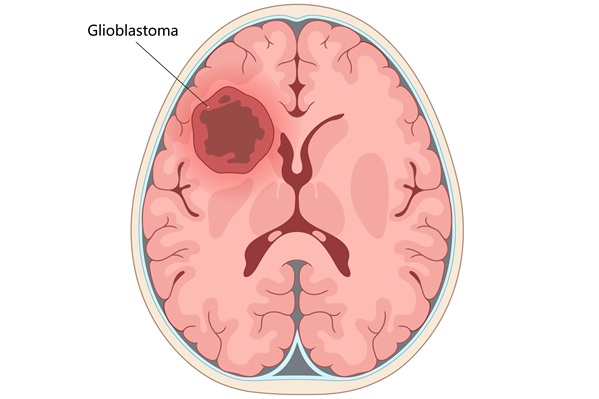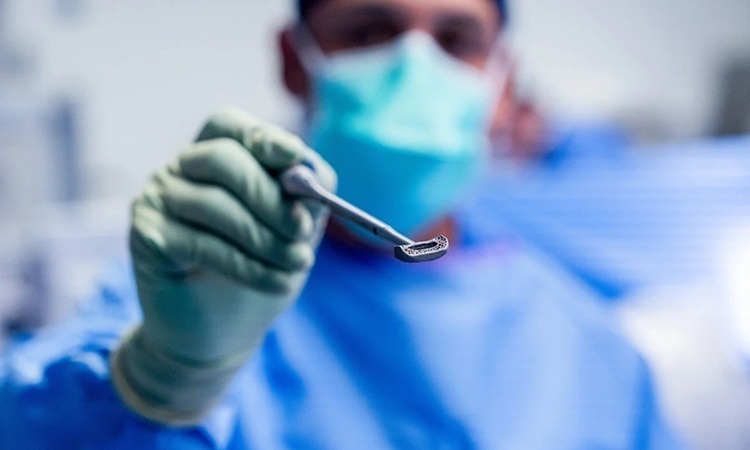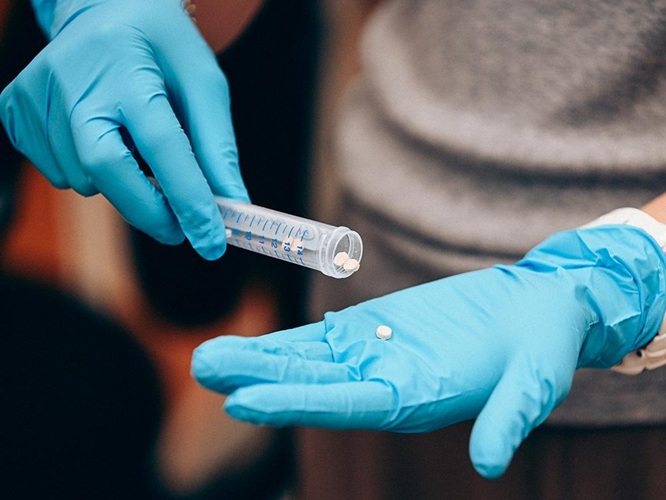Stimulating Cervical Neurons Sustains Post-Trauma Breathing
|
By HospiMedica International staff writers Posted on 30 Oct 2018 |

Image: Dormant cervical neurons can kick start breathing following spinal cord injury (Photo courtesy of Fehlings Lab, UT).
A new study suggests that stimulation of a group of dormant neurons located in the cervical area could help restore breathing following traumatic spinal cord injury (SCI).
Researchers at the University of Toronto (UT; Canada), St. Michael’s Hospital (Toronto, Canada), and the Krembil Research Institute (Toronto, Canada), using a combination of pharmacogenetics and physiology assays in different models of SCI, found that mid-cervical excitatory interneurons--which form synapses on the phrenic motor neurons that control the main inspiratory muscle--can modulate phrenic motor output and diaphragmatic function.
Although these interneurons are not necessary for breathing under normal conditions, their stimulation in non-injured animals enhances inspiratory amplitude. But in a murine model, the researchers found that the same cells where crucial for promoting respiratory recovery after traumatic SCI, and that their stimulation restores respiratory motor function. The researchers suggest that targeting this latent cell subpopulation could provide a strategy to restore breathing after central nervous system (CNS) trauma. The study was published on October 10, 2018, in Nature.
“The big takeaway here is the identification of this novel neural circuit. We found is if we activate this population of neurons using pharmacogenetics, we can rescue breathing,” said senior author professor Michael Fehlings, MD, PhD, of the UT department of surgery. “The biggest implication of this work is that one day, we may be able to flip a switch and improve the breathing of people living with these injuries.”
Respiratory dysfunction is a major cause of morbidity and mortality during and following SCI, often necessitating a tracheostomy or long-term use of an assistive ventilation device. The trauma causes impairment of respiratory muscles, reduced vital capacity, ineffective cough, reduction in lung and chest wall compliance, and distortion of the respiratory system. Severely affected individuals may require assisted ventilation, which can also cause problems with speech production.
Related Links:
University of Toronto
St. Michael’s Hospital
Krembil Research Institute
Researchers at the University of Toronto (UT; Canada), St. Michael’s Hospital (Toronto, Canada), and the Krembil Research Institute (Toronto, Canada), using a combination of pharmacogenetics and physiology assays in different models of SCI, found that mid-cervical excitatory interneurons--which form synapses on the phrenic motor neurons that control the main inspiratory muscle--can modulate phrenic motor output and diaphragmatic function.
Although these interneurons are not necessary for breathing under normal conditions, their stimulation in non-injured animals enhances inspiratory amplitude. But in a murine model, the researchers found that the same cells where crucial for promoting respiratory recovery after traumatic SCI, and that their stimulation restores respiratory motor function. The researchers suggest that targeting this latent cell subpopulation could provide a strategy to restore breathing after central nervous system (CNS) trauma. The study was published on October 10, 2018, in Nature.
“The big takeaway here is the identification of this novel neural circuit. We found is if we activate this population of neurons using pharmacogenetics, we can rescue breathing,” said senior author professor Michael Fehlings, MD, PhD, of the UT department of surgery. “The biggest implication of this work is that one day, we may be able to flip a switch and improve the breathing of people living with these injuries.”
Respiratory dysfunction is a major cause of morbidity and mortality during and following SCI, often necessitating a tracheostomy or long-term use of an assistive ventilation device. The trauma causes impairment of respiratory muscles, reduced vital capacity, ineffective cough, reduction in lung and chest wall compliance, and distortion of the respiratory system. Severely affected individuals may require assisted ventilation, which can also cause problems with speech production.
Related Links:
University of Toronto
St. Michael’s Hospital
Krembil Research Institute
Latest Critical Care News
- New Autoinjector Could Transform Trauma Care in Severe Bleeding Emergencies
- Portable Light-Based Brain Monitor Improves Dementia Diagnosis
- New Ultrasound Technique Enables Safer Vein Access in Critically Ill Patient
- CVD Risk Prediction Tool Could Guide Statin Therapy
- Wearables Could Revolutionize Pregnancy Monitoring and Detect Abnormalities
- AI Model Identifies AF Patients Requiring Blood Thinners to Prevent Stroke
- Soft Robot Intubation Device Could Save Lives
- Bee-Sting Inspired Wearable Microneedles to Revolutionize Drug Delivery
- Wearable Smart Patch Runs Tests Using Sweat Instead of Blood
- AI Improves Prediction of CKD Progression to End Stage Renal Disease
- First-Of-Its-Kind Online Tool to Revolutionize Treatment of High Blood Pressure
- Temperature-Sensing Patch Enables Early Breast Cancer Detection
- AI Stethoscope Detects Three Heart Conditions In 15 Seconds
- AI Powered Mini-Camera Predicts Recurrent Heart Attack
- Breakthrough Metamaterial Technology Paves Way for Next-Gen Wearable Devices
- AI Tool Helps Pinpoint Problem Heart Cells in Ventricular Tachycardia
Channels
Surgical Techniques
view channel
AI Spine Model Could Reduce Surgical Risks
Nearly 3 in 10 adults in the United States have experienced lower back pain in any three months, making it the most common musculoskeletal pain. Back pain is one of the leading causes of disability worldwide,... Read more
Novel Method Uses Interstitial Fluid Flow to Predict Where Brain Tumor Can Grow Next
Glioblastoma is one of the most aggressive brain cancers, with patients surviving on average only 15 months after diagnosis. Surgery and radiation can temporarily control the tumor, but the disease almost... Read more
World’s First Custom Anterior Cervical Spine Surgery Performed Using Personalized Implant
Anterior cervical fusion has been performed since the 1950s and is one of the most common spine procedures. Traditional implants are designed as one-size-fits-all, which can affect spinal alignment, healing,... Read morePatient Care
view channel
Revolutionary Automatic IV-Line Flushing Device to Enhance Infusion Care
More than 80% of in-hospital patients receive intravenous (IV) therapy. Every dose of IV medicine delivered in a small volume (<250 mL) infusion bag should be followed by subsequent flushing to ensure... Read more
VR Training Tool Combats Contamination of Portable Medical Equipment
Healthcare-associated infections (HAIs) impact one in every 31 patients, cause nearly 100,000 deaths each year, and cost USD 28.4 billion in direct medical expenses. Notably, up to 75% of these infections... Read more
Portable Biosensor Platform to Reduce Hospital-Acquired Infections
Approximately 4 million patients in the European Union acquire healthcare-associated infections (HAIs) or nosocomial infections each year, with around 37,000 deaths directly resulting from these infections,... Read moreFirst-Of-Its-Kind Portable Germicidal Light Technology Disinfects High-Touch Clinical Surfaces in Seconds
Reducing healthcare-acquired infections (HAIs) remains a pressing issue within global healthcare systems. In the United States alone, 1.7 million patients contract HAIs annually, leading to approximately... Read moreHealth IT
view channel
Printable Molecule-Selective Nanoparticles Enable Mass Production of Wearable Biosensors
The future of medicine is likely to focus on the personalization of healthcare—understanding exactly what an individual requires and delivering the appropriate combination of nutrients, metabolites, and... Read moreBusiness
view channel
Philips and Masimo Partner to Advance Patient Monitoring Measurement Technologies
Royal Philips (Amsterdam, Netherlands) and Masimo (Irvine, California, USA) have renewed their multi-year strategic collaboration, combining Philips’ expertise in patient monitoring with Masimo’s noninvasive... Read more
B. Braun Acquires Digital Microsurgery Company True Digital Surgery
The high-end microsurgery market in neurosurgery, spine, and ENT is undergoing a significant transformation. Traditional analog microscopes are giving way to digital exoscopes, which provide improved visualization,... Read more
CMEF 2025 to Promote Holistic and High-Quality Development of Medical and Health Industry
The 92nd China International Medical Equipment Fair (CMEF 2025) Autumn Exhibition is scheduled to be held from September 26 to 29 at the China Import and Export Fair Complex (Canton Fair Complex) in Guangzhou.... Read more













